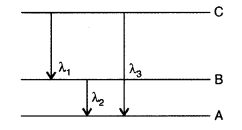
Never Miss an Exam Update
CBSE Class 12th Physics Chapter 12 - Atoms is included in the 8th unit of the syllabus. Along with chapter 12, one other chapter is included in Unit 8, which is Nuclei. Unit 8, along with unit 7, that is, Dual Nature of Radiation and Matter, carries a total of 8 marks in the question paper. The following topics are included in the 12th chapter of the syllabus: Alpha-particle scattering experiment; Rutherford's model of the atom; Bohr model of the hydrogen atom, Expression for radius of nth possible orbit, velocity and energy of electron in nth orbit, hydrogen line spectra (qualitative treatment only). The theory paper will be conducted for 70 marks. 30 marks will be provided for the practical exam.
Since the exams are fast approaching, make sure to complete your curriculum on time to revise using the model test papers available on the official website of the Central Board of Secondary Education. Try to focus on completing your syllabus in the first 6 months of the academic year so that you have enough time to revise or clear your doubts with your tutors or teachers as soon as possible. Physics can be an intimidating subject, so try and make notes after the end of every lecture for an effective revision session at home. Note down important formulas and theorems where necessary. Always focus on understanding the topics rather than mugging up the answers. Use creative mediums to understand difficult topics, such as YouTube videos, and take online mock tests to assess your preparation level after completing your syllabus.
The Central Board of Secondary Education has recently released the class 12 date sheet, according to which the exams will be starting on 15th February 2025. The date sheet is now uploaded online at cbse.nic.in in a PDF format. While attempting the Physics question paper, do not forget to read the instructions carefully printed at the top of the question paper to understand the internal choices in the question paper.
Given below, we are sharing some CBSE Class 12th Physics Chapter 12 - Atoms Important Questions with Answers. Practice these questions since they have a high chance of appearing in the question paper.
Are you feeling lost and unsure about what career path to take after completing 12th standard?
Say goodbye to confusion and hello to a bright future!

Was this article helpful?
































